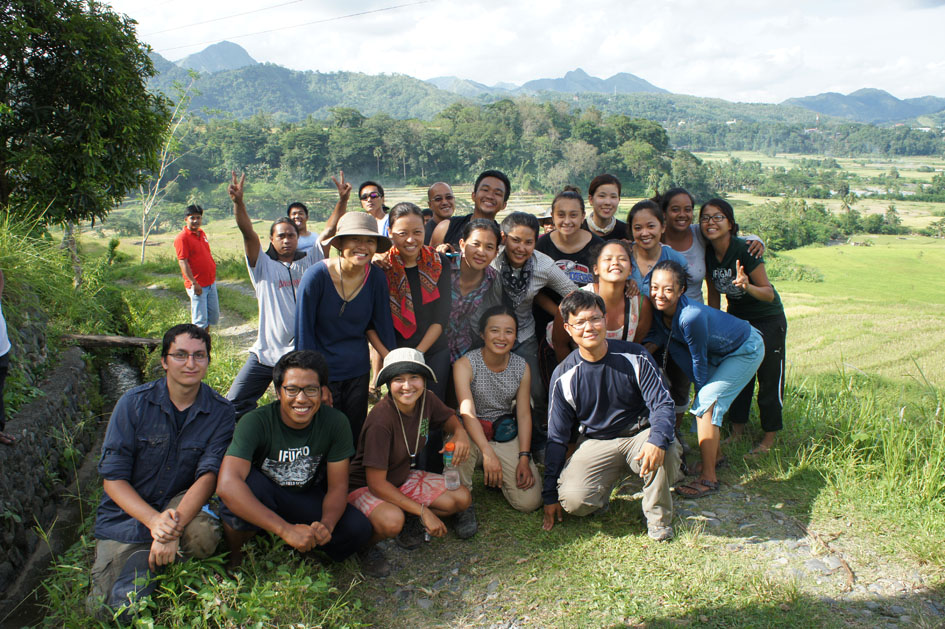|
Today marks the end of the excavations at the Old Kiyyangan Village, Kiangan, Ifugao. Typical of most archaeological excavations, important findings and interesting artifacts start showing up towards the end of the field season. So far, the crew's discoveries support the idea that the Old Kiyyangan Village predated the arrival of the Spanish in Northern Luzon. Trench 3, a unit located in what is believed to be an area where a bale (house) once stood (based on Ifugao settlement pattern) provided three occupational layers and three distinct pottery frequency -- cooking jars in the upper layers, cooking jars, water jars, and tradeware ceramics in the second occupational layers, and water jars in the lower levels. The prevalence of cooking jar sherds in the upper levels suggest that the area was used as a rice field, where cooking jars where brought as containers of cooked rice, while the prevalence of water jars in the lower levels indicate that the area was once a location of a house -- water jars are not transported owing to their size and weight.  Ceramics on the lower levels also provided a hint that the lower occupational layers predated the arrival of the Spanish in northern Luzon -- complete absence of tradeware ceramics (stoneware and porcelain). Although tradeware ceramics were being traded in the lowlands as early as the 10th Century C.E., it is difficult to pinpoint the exact period when the Old Kiyyangan Village was first established based on the ceramics alone. We are hoping that C14 dates and soil analysis would provide this information. In addition, soil analyses will also provide evidence for initial rice cultivation as well as the pre-rice landscape and vegetation cover of the area.  Other findings include the discovery of three whole pots in Trench 4 (another bale location), the conclusion that the buried walls in Trench 1 were once an irrigation ditch, which suggests that the almost .5 km strip of land between the current rice fields and the junction of Ibulao and Ambangal Rivers might have held more rice fields, a whole water jar in Trench 5 (located near Trench 1), and that the primary source of protein among Old Kiyyangan settlers is deer meat (70% of faunal remains recovered are deer bones). The IAP crew is also scheduled to provide Ifugao community a brief report on the discoveries of the excavations on June 29, 2012 at the National Museum-Kiangan Branch. Included in this activity are student presentations based on preliminary analysis of artifacts and ecofacts discovered in the village as well as an exhibit at the National Museum-Kiangan Branch. The exhibit highlights pottery types from Old Kiyyangan that were previously undocumented and the place of the village in the history of Ifugao.  Today, we were also visited by a group of high school students from Saint Joseph School. We are hoping that public engagement will change local communities' perception of archaeology as a treasure hunting enterprise. In addition, the exposure of the students might provide the impetus for an interest in anthropology/archaeology.
2 Comments
Leave a Reply. |
Stephen AcabadoI am an anthropological archaeologist interested in human-environment interactions Archives
June 2012
Categories
All
|




 RSS Feed
RSS Feed
